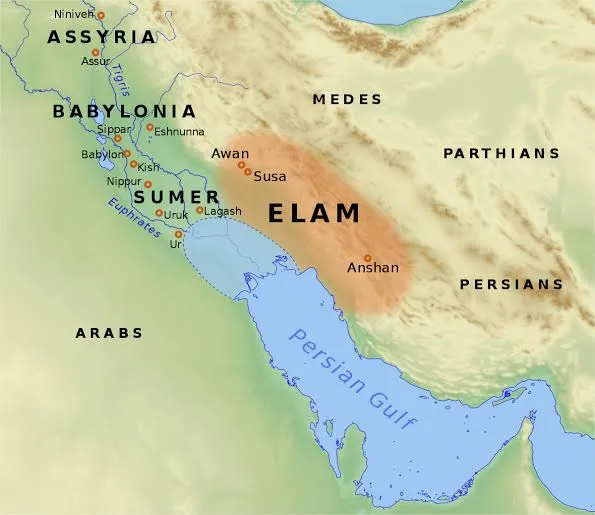
Posted on 06/26/2024 7:42:39 AM PDT by Cronos
Dravidians are an ethno-linguistic people group predominantly found in southern India, Sri Lanka, but also Pakistan, Afghanistan, Bangladesh, and the Maldives.
The historical origin of Dravidians is a highly contested topic with theories that are often heavily politically motivated. But an increasing number of archaeological, linguistic and genetic studies seem to slowly uncover an ever-developing yet consistent story.

Dravidians probably started out from the southwest of Iran (around Zagros mountains) when migrants from the Proto-Elamite period of the Elam civilization, probably in a bid to escape the increasingly domineering Sumerian civilisation and to spread their own culture (proto-elamite scripts are regarded to be unrelated to sumerian scripts), migrated further into the east to sites like Tepe Yahya, eventually migrating to the Indus valley. There probably were several waves of earlier and later migrations too from the near east to the Indus valley. Already there were settlements, of presumably local population, in early Indus river valley sites like Mehrgarh as early as 10,000 years ago with relatively sophisticated farming, herding and pottery. Mehrgarh shows strong cultural influences of Mesapotamia and the similarities between the neolithic settlements of eastern Mesapotamia and western Indus valley strongly suggests a cultural continuum between the regions. Linguistically, Dravidian languages resemble Elamite (see David McAlpin 1981) and some connections have been suggested with Sumerian. These Elamite migrants intermixed with the native southeast Asian hunter gatherers, who were related to Australo-Melanesian/Veddoid people, and eventually formed the Harappan civilization or the Indus valley civilization (IVC). Proto-Elamite migrants in Indus Valley brought with them the first written scripts (the proto-elamite scripts) and other technological advances, which were pivotal in the creation of Harrapan scripts and the development of the IVC. Its important to note that the Indus scripts is still not deciphered and most things we know about the IVC is through its contact with contemporary civilizations of its time like the Sumerian civilization.
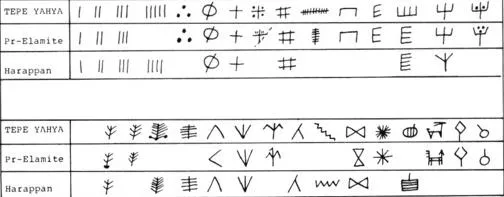 Ancient DNA of people from around IVC show ~50–89% ancient Iranian hunter gatherer DNA (and West Siberian Hunter Gatherers DNA) and ~11–50% native southeast Asian hunter gatherer DNA. These genetic studies support the Elamo-Dravidian hypothesis. IVC people traded things like sesame oil with Mesopotamian civilizations where it was known as ilu (Sumerian) or ellu (Akkadian), which is similar to el in Tamil (a Dravidian language). Proto-Dravidian language originated or diverged from Harappan dialect 5000–6000 years ago.
Ancient DNA of people from around IVC show ~50–89% ancient Iranian hunter gatherer DNA (and West Siberian Hunter Gatherers DNA) and ~11–50% native southeast Asian hunter gatherer DNA. These genetic studies support the Elamo-Dravidian hypothesis. IVC people traded things like sesame oil with Mesopotamian civilizations where it was known as ilu (Sumerian) or ellu (Akkadian), which is similar to el in Tamil (a Dravidian language). Proto-Dravidian language originated or diverged from Harappan dialect 5000–6000 years ago.
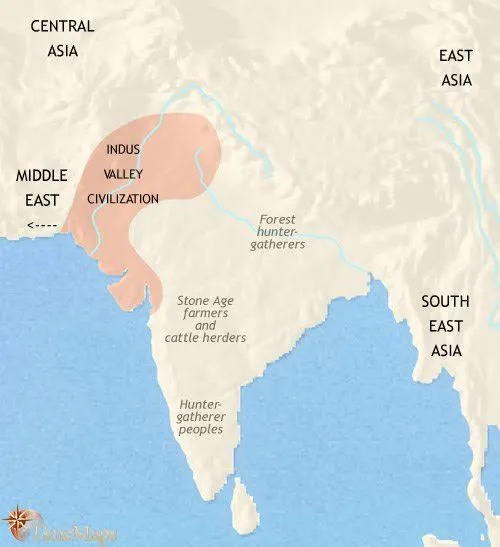
Location of the Indus Valley civilization
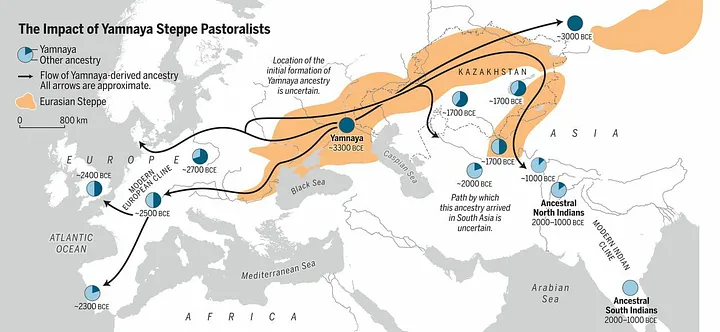
Yamnaya Steppe pastoralist ancestry into south Asia and Europe
About 3500 years ago, steppe pastoralists from central Eurasia (Yamnaya, Sintashta culture) migrated into south Asia which was the last massive migration into the area after the Dravidians. Steppe pastoralists (who probably weren’t just pastoralists but whose ancestors were) brought with them proto Indo-European language and culture (the steppe pastoralists who migrated west are the ancestors of modern European population). The steppe people migration into south asia resulted in an obvious cultural clash with Dravidians and coincided with the decline of IVC (~ 3000–4000 years ago due to climate change with the 4.2 kiloyear event). Some People from IVC moved southward and eastward, intermixing more and more with the native southeast Asian hunter gatherers as they did, while other people (like the Brahui, who are a major Dravidian group in Pakistan) stayed behind. There is a lack of records for the next thousand years but the settlements of these southward (and eastward) migrating IVC people must have later given rise to settlements like the Keelzadi excavation site (~300 BCE) from early Tamil kingdoms. As we’d expect, Keelzadi excavation site is more Harappan-like, where the Tamil-Brahmi script found shows a clear, close relation to the Indus scripts of the IVC. Evidence points to a secular (no ritualistic or religious objects were found) urban civilization and a complete absence of caste system and Aryan (steppe-pastoralists migrants) influence.
After the steppe pastoralists migration, the whole population of the subcontinent who originally must have mostly spoken a form of proto-dravidian would have become increasingly bilingual, especially in the north due to the increasing Aryan influence, which never reached the south in a stark way. This was the beginning of the strong cultural difference between the northern and southern part of the subcontinent that can still be seen. In the northern parts of the subcontinent, the proto-dravidian language were eventually abandoned in favour of the proto indoeuropean language. Sometime later, there were two major distinct population in South Asia- Ancestral north Indians (ANI), who had Iranian related ancestry, southeast Asian hunter gatherer ancestry and steppe pastoralists ancestry, and Ancestral South Indians (ASI) who had Iranian related ancestry (~20%) and southeast Asian hunter gatherer ancestry (~80%) and probably spoke Proto-Dravidian language. From 4200 BC to 100 CE there were heavy intermixing between ANI and ASI (giving rise to the modern Indian population), after which there was a shift to endogamy, probably indicating the deep rooted establishment of caste system (the rudimentary structure of the caste system can be found at least from 500 BCE).
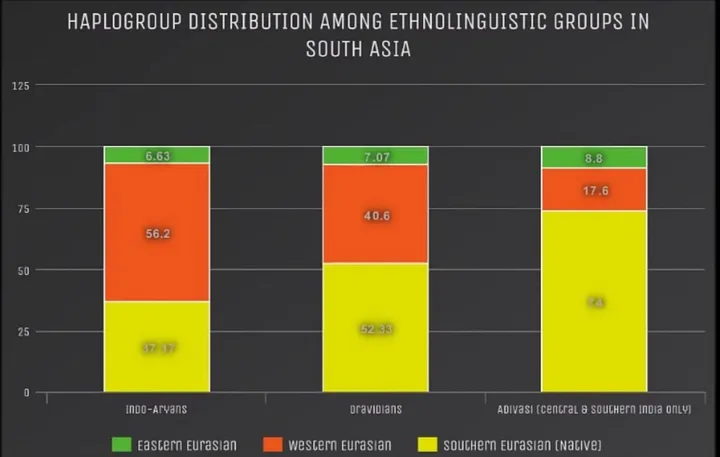
The steppe pastoralists gene are mostly found in higher percentages within various Brahminical groups and some upper caste, which is consistent with the history of caste system endogamy. People from traditionally lower caste tend to have lesser percentage of western Eurasian ancestry. The percentage of ANI ancestry decreases as one moves southward in the Indian subcontinent. Due to heavy intermixing for thousands of years, almost all Indians have 39 to 71% ANI ancestry. Adivasi groups in south India are direct descendants of ASI and have purer Veddoid ancestry, and least ANI admixture. Thus, Dravidian is not a race but an ethnolinguistic group and almost all Indians have common ancestry, the most dominant of which is from the people of IVC.
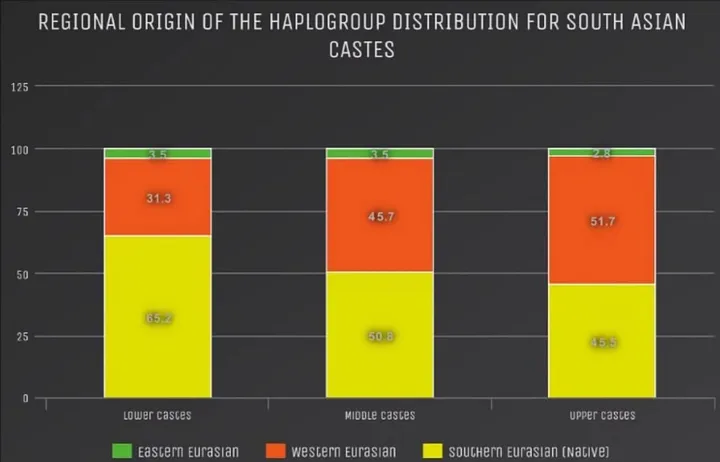
In other words, genetically, the sole difference between people from middle caste and lower caste is the slight variation of the percentage of ANI and ASI ancestry, and the sole difference between higher caste and lower (and middle) caste is the slight variation of the percentage of ANI and ASI ancestry in addition to some upper caste having small percentages of steppe pastoralists ancestry as well.
History of Elamites:
Around 18,000 BC, the Kebarans (nomadic people from late stone age) migrated from the Horn of Africa to Mesopotamia. Around 15,000 BC they split into Nostratics, Dene-Daics, Afro-Asiatics, and Amerinds. Around 12,000 BC, the Nostratics split into the Elamites, the Kartvelians, and the Eurasiatics (who are the ancestors of Indo-Europeans). Around 7000 BC, Dravidians branched off from the Elamites.
History of southeast Asian hunter gatherers:
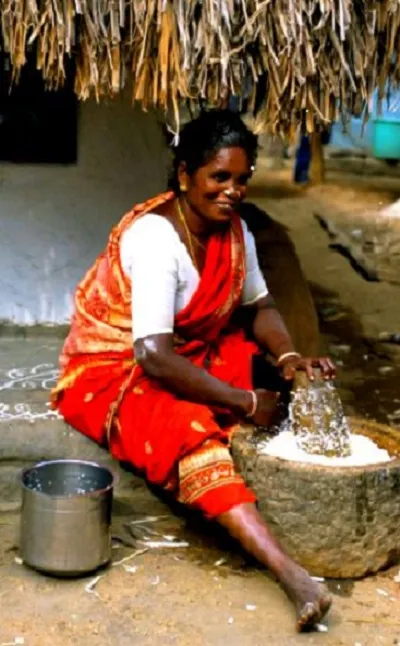
Though modern dravidians are genetically and culturally linked to the Indus Valley civilisation people and linguistically traced back to the proto-elamites who were part of one of the first civilizations to ever emerge on the planet, the modern south Indian’s ancestry has more genetic contributions from indigenous groups related to Australo-Melanesians and Veddoid people than from ancient Iranian farmers. This can be even seen phenotypically- south Indians look similar to Melanesians, Australian aborigines, Negritos and other indigenous tribal groups in south east Asia.

Ancestors of Native southeast Asian hunter gatherers (Ancient Ancestral South Indians AASI) were a group closely related to Australo-Melanesians and Veddoids (and distantly related to Andamanese Onge people) whose ancestors were the first modern humans to leave the horn of Africa (~65,000 years ago) and travelled, among other routes, through Arabia, along the coasts of India and then through south east Asia (and the now sunken landmass- Sundaland) to Australia and Melanesia, and eventually populated the entire south, southeast Asia, and Australia for the first time (by any modern humans). Their influence in the history of Asia, and in the broader human history cannot be overestimated.
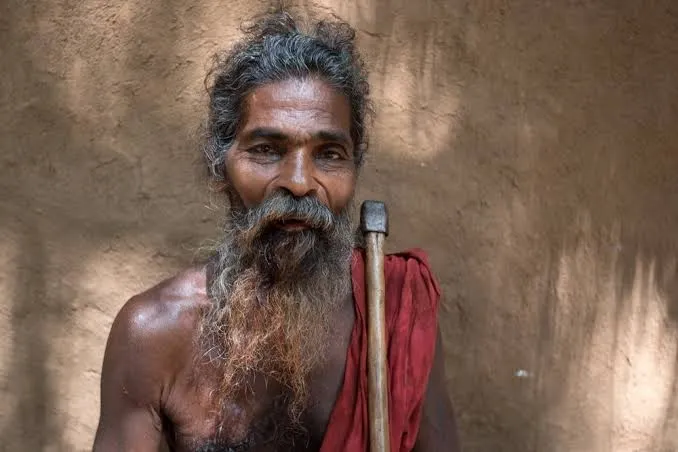
There were probably later migrations too, for example, the north Australid phenotype in north Australia are thought to be from Veddoid immigrants from India. Half white half Australian aborigine people look phenotypically similar to South Asians, giving us a preview of what might have actually gone down in the Indian subcontinent.

Melanesian people
The native southeast Asian hunter gatherers probably had their own distinct cultures and languages which would have been lost to or assimilated into the more dominant Dravidian culture. For example, the Veddas people of Sri Lanka (who are the earliest inhabitants of the island, arriving ~40,000 years ago) have a language distinct from both Austronesian and Dravidian languages, while also being genetically distinct from the local Sri Lankans (who are immigrants from India with mainly ANI-ASI ancestry).

Phenotypes of Australo-Melanesian people
References
1. The formation of human populations in South and Central Asia, Vagheesh M. Narasimhan, et al.
3. POTTS, Daniel. “THE POTTER’S MARKS OF TEPE YAHYA.” Paléorient 7, no. 1 (1981): 107–22.
5. On Sumerian and Tamil http://arutkural.tripod.com/sumstudies/sumtopics.html
Very interesting!
The Branch-Dravidians formerly in Waco, Texas?.....................
Thanks
Maybe 40-50 years ago the prevailing wisdom was, IIRC, that the caste system occurred when the Aryans overtook the Dravidians in the Indus River valley, with the Brahmin and Kshatriya being Aryan and the Vaisha and Shudra being Dravidian. Of course this was long before the age of DNA analysis, and as usual the truth is much more complicated.
Thanks. The Australoid aboriginals look a lot like South Indians.
Yes, very.
Famous for their late morning/early afternoon meals, they are the Brunch Dravidians.
Elamites are also mentioned in Acts 2.9 as among the speakers of foreign languages who were present in Jerusalem on Pentecost. The Elamite language eventually died out--their ancient homeland is now Arabic-speaking.
[snip] (= Khudur-Lagamar of the inscriptions), king of Elam. Many centuries before the age of Abraham, Canaan and even the Sinaitic peninsula had been conquered by Babylonian kings, and in the time of Abraham himself Babylonia was ruled by a dynasty which claimed sovereignity over Syria and Palestine. The kings of the dynasty bore names which were not Babylonian, but at once South Arabic and Hebrew. The most famous king of the dynasty was Khammu-rabi, who united Babylonia under one rule, and made Babylon its capital. When he ascended the throne, the country was under the suzerainty of the Elamites, and was divided into two kingdoms, that of Babylon (the Biblical Shinar) and that of Larsa (the Biblical Ellasar). The king of Larsa was Eri-Aku (”the servant of the moon-god”), the son of an Elamite prince, Kudur-Mabug, who is entitled “the father of the land of the Amorites.” A recently discovered tablet enumerates among the enemies of Khammu-rabi, Kudur-Lagamar (”the servant of the goddess Lagamar”) or Chedorlaomer, Eri-Aku or Arioch, and Tudkhula or Tidal. Khammu-rabi, whose name is also read Ammi-rapaltu or Amraphel by some scholars, succeeded in overcoming Eri-Aku and driving the Elamites out of Babylonia. Assur-bani-pal, the last of the Assyrian conquerors, mentions in two inscriptions that he took Susa 1635 years after Kedor-nakhunta, king of Elam, had conquered Babylonia. It was in the year B.C. 660 that Assur-bani-pal took Susa. [/snip]
https://classic.net.bible.org/dictionary.php?word=Kedorlaomer
Disclaimer: Opinions posted on Free Republic are those of the individual posters and do not necessarily represent the opinion of Free Republic or its management. All materials posted herein are protected by copyright law and the exemption for fair use of copyrighted works.